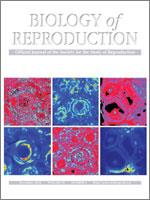Calcitonin gene-related peptide (CALCB), adrenomedullin (ADM), and ADM2/intermedin play critical roles in vascular adaptation during pregnancy through calcitonin receptor-like receptor (CALCRL) and receptor activity-modifying proteins (RAMPs). This study was designed to assess the predominant RAMP that associates with CALCRL to form a functional receptor in the rat uterine artery smooth muscle (RUASM). We also determined if these receptor component associations are decreased by tumor necrosis factor (TNF) alpha and if CALCB, ADM, or ADM2 can rescue CALCRL/RAMP associations. Using proximity ligation assay in RUASM cells, this study shows that CALCRL predominantly associates with RAMP1 forming a CALCB receptor, and minimally with RAMP2 and RAMP3 that confer specificity for ADM and ADM2. However, knockdown of RAMP1 mRNA increases the interaction between CALCRL and RAMP3 without affecting the association of CALCRL and RAMP2. Furthermore, CALCB, ADM, and ADM2 have no effects on the associations of CALCRL with any of the RAMPs in RUASM cells. Interestingly, CALCB reverses the TNFalpha-induced decreases in CALCRL/RAMP1 associations. Furthermore, CALCB increases ERK1/2 phosphorylation in a time-dependent manner in RUASM, and the protective effect of CALCB on TNFalpha-induced inhibition of CALCRL/RAMP1 associations was significantly blocked in presence of ERK inhibitor (PD98059). In conclusion, this study demonstrates that CALCRL predominantly associates with RAMP1 forming a CALCB-specific receptor complex in RUASM cells, which is dissociated by TNFalpha. Rescue of TNFalpha-induced dissociation of CALCRL/RAMP1 complex by CALCB in RUASM cells suggests a potential use of CALCB in developing therapeutic strategies for pregnancy-related complications that are vulnerable to abnormal levels of TNFalpha, such as fetal growth restriction and preeclampsia.
How to translate text using browser tools
26 October 2016
Calcitonin Gene-Related Peptide Rescues Proximity Associations of Its Receptor Components, Calcitonin Receptor-Like Receptor and Receptor Activity-Modifying Protein 1, in Rat Uterine Artery Smooth Muscle Cells Exposed to Tumor Necrosis Factor Alpha
Yuanlin Dong,
Madhu Chauhan,
Michael Belfort,
Chandra Yallampalli
ACCESS THE FULL ARTICLE

Biology of Reproduction
Vol. 95 • No. 6
December 2016
Vol. 95 • No. 6
December 2016
CALCB
pregnancy
uterine artery




